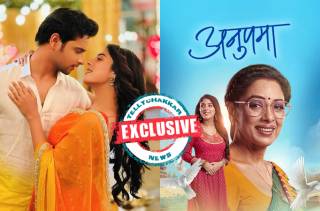
MUMBAI: Mendes’ vision to capture the story in real time in a way that plays as one continuous shot requires the audience to join the characters and immerse themselves in their turbulent journey. To be clear: 1917 was not shot in one take, but was filmed in a series of extended, uncut takes that could be connected seamlessly to look and feel as if it is one continuous shot. As there is no cut within a scene, the viewer, much like Schofield and Blake, is not able to step away from the mission that lies in front of them. Although Mendes had shot the opening scene of Spectre as one continuous shot, shooting an entire film this way was a new experience for everyone, including Mendes. “I’ve never been in a situation where we’d start shooting on Monday, and I knew for a fact that what we shot on Monday would be in the movie,” Mendes says.
Shot in this way, the audience gets an authentic, tangible sense of what these boys would have gone through. “The reason I chose to do that with this material is, from the very beginning, I felt it should be told in real time,” Mendes says. “The sense of distance traveled is very important. But it is also, most importantly, an emotional decision, that I hope connects you even more closely to the journey of the two central characters. I wanted an audience to take every step of the journey with them, to breathe every breath. It wasn’t a decision that was imposed on the material afterwards. I had the idea alongside the idea for the story – style, form and content all came at the same time. You begin to construct the narrative so that every second forms part of one continuous, unbroken thread.”
Mendes and Academy Award® winner (and 14-time Oscar® nominee) Roger Deakins worked with one another on Jarhead and have collaborated on films from Revolutionary Road to Skyfall and have a shorthand with each other. “From the first moment I talked to Sam about the idea as a one-shot movie, I knew it was going to be immersive and that it would be essential for the storytelling,” Deakins says.
With the one-shot premise, it was imperative to block the scenes during 1917’s four-month rehearsal process, and to discuss the layout of the sets in great detail. Once it was established how the actors would move within the space for the scenes, it became possible to map out exactly where the camera would move.
The cinematographer expands on this process. “Sometimes, you need to be close, and sometimes you want to pull away and see the characters within the space, within the landscape,” Deakins says. “So, it was getting a balance between that. A lot of the blocking was done in our heads, then Sam would rehearse the scenes, then we drew schematics and had a storyboard artist who gave different options within those basic ideas. It gradually evolved, but then when we worked with our actors on location, it evolved even further.”
The director reflects that with standard filmmaking, there’s always a “get-out-of-jail card” that allows fixes and changes in post. “Your normal thought process is, ‘We might be able to cut around this moment, or shorten this scene, or we might take that scene out altogether.’” Mendes says. “That wasn’t possible on this film. There was simply no way out. It had to be complete. The dance of the camera and the mechanics all had to be in sync with what the actor was doing. When we achieved that, it was exhilarating. But it took immense planning, and immense skill from the operators.” Deakins often needed to be with the focus puller and DIT in a small white van, remotely operating the camera even if it was being carried. As they were frequently operating the camera remotely across vast distances, it was very tricky. “Sometimes, we’d have a camera that was carried by an operator, hooked onto a wire,” Mendes says. “The wire would carry it across more land. It was unhooked again, that operator ran with it then stepped onto a small jeep that carried him another 400 yards, and he stepped off it again and raced around the corner.”
Due to the prep period and many lengthy rehearsals on shooting days, there was always a clear starting point and physical structure to the scenes, but this did not mean the filmmakers and cast were fixed entirely in their approach.
Because the film needed to play as one shot, primarily filmed outside, Deakins relied upon light that was as natural as possible, which meant Mother Nature was as much in charge of the shoot as the filmmakers were. Instead of blue skies and direct sunlight, which bring with it shadows that are difficult to shoot around and impossible for continuity, the production prayed for the days to be consistently overcast.
No location ever repeats in 1917, so the camera is constantly moving through landscapes. “Being such an exterior movie, we were very dependent on the light and the weather,” Deakins says. “And we realized, well for a start, you can’t really light it. If you were running down a trench and turning around 360 degrees, there’s nowhere to put a light anywhere. Because we were shooting in story order, we had to shoot in cloud to get the continuity from scene to scene. Some mornings the sun would be out, and we couldn’t shoot. So, we would rehearse instead.”
For the director, total engagement from all involved in his production was paramount. “That is behind the way in which we decided to shoot 1917,” Mendes says. “I wanted people to understand how difficult it was for these men. And the nature of that is behind everything.”
(Also Read: Pooran Kiri talks about web career…)
His comrade in arms shares that the film must be experienced to believe. “Until you actually see this on a screen,” Deakins says, “you don’t really realize how immersive it is and how this technique draws you into it.”
How to Cut a Film with No Cuts
The challenge of joining the cuts in 1917 is that every scene had to be shot with incredible precision…so that two frames could be blended together seamlessly on screen. That painstaking attention to detail added another layer of continuity because the pacing needed to match, as well as other elements in the scene, such as the weather, cast and sets.
As it was crucial for the takes to be tracked, it meant fully focused attention—and constant vigilance—from the script supervisor, visual effects and the editor. It was imperative for Mendes, Deakins and their fellow Oscar® winner, editor Lee Smith, to know the moment at which the shot would be stitched from one scene to the next, as it could never be fixed in post with a cut to a different perspective.
In order to take the characters seamlessly from one cut to the next, Mendes made sure that blends happened in a variety of subtle ways. That could mean traveling through doorways and curtains, or when the characters enter a bunker, or with a silhouette, or a body movement, or a foreground element or a prop…or even a 360-degree shot.
Producer Jayne-Ann Tenggren walks us through the logic. “How we blended from one shot to another was designed around the action, sometimes because of a change in lighting environment, sometimes because of a need to change the camera rig, and sometimes simply an emotional choice as to how long the scene should run,” Tenggren says.
Lest you believe editor Lee Smith had it easy on the production, think again. “This has been a very complicated film to edit because the whole process of the blending, making it look like one shot—and doing the kind of the mixing of those shots—is so crucial, and has had to be done so fast, in order to give Sam instant feedback,” producer Callum McDougall says. “In the opening of Spectre, we created one long shot in Mexico City. But it’s nothing compared to what Lee, who’s our same editor, has had to do here.”
For Mendes, this production has been an embarrassment of film-artist riches. “We have Roger Deakins,” Mendes says, “who you could argue is one of the two or three greatest living cinematographers, fresh off his Oscar® win for Blade Runner 2049, collaborating with Lee Smith, who just won the Oscar® for editing Dunkirk, and Dennis Gassner, who I’ve worked with five times now. We started working together on Road to Perdition way back, and he also designed Blade Runner, Skyfall and some of your favorite Coen brothers’ movies.
(Also Read: I hope every newcomer gets a senior like Emraan Hashmi to work with: Shamaun Ahmed)

















Add new comment